Art Collectors
What I Buy and Why: Tunisian Financier Selim Bouafsoun on How He Overcame His Fear of Collecting, and His Fantasy Helicopter Heist
We caught up with the collector at his home in London.
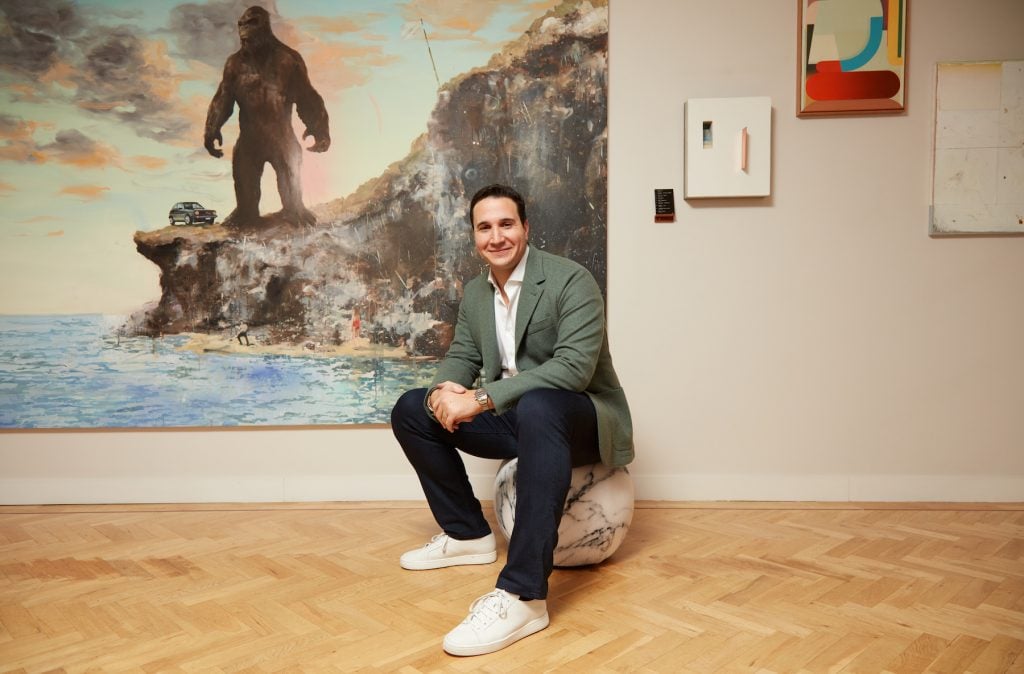
We caught up with the collector at his home in London.

Naomi Rea

Born in a coastal town in Tunisia, and raised between Riyadh and Jeddah in Saudi Arabia, art collector Selim Bouafsoun credits his discerning eye the deep-rooted cultures of abstraction, geometry, and architecture in the Islamic surroundings he grew up with.
Living between London and Dubai today, Bouafsoun’s growing collection is influenced by the multiplicity and cosmopolitanism of both cities, with a particular focus on mid-career and established artists working in abstraction, and an affinity for artists from Africa and Latin America.
Bouafsoun, who supports his collecting habit through a career in finance, is also a patron of the Delfina Foundation and the cofounder of Nafas Tunis, a charity dedicated to supporting pandemic relief efforts in Tunisia through the sale of artworks.
We caught up with the collector to chat about his first-ever purchase, how he finally got his hands on a coveted Issy Wood painting on velvet, and his ultimate fantasy art heist.
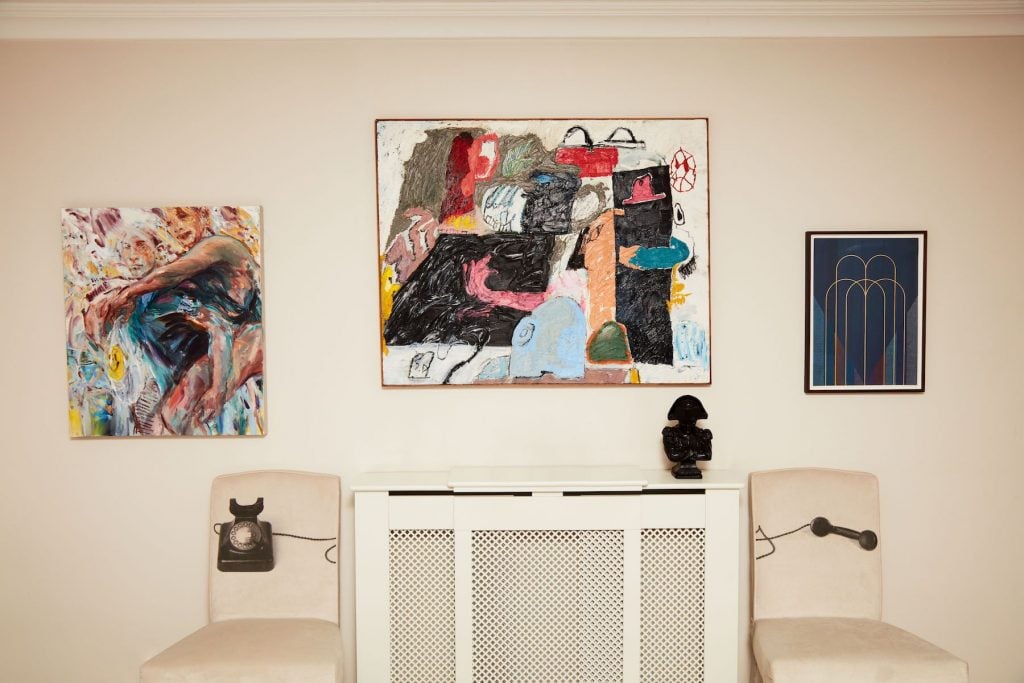
Works by Kylie Manning, Stevie Dix, Claudia Wieser. Photo by Yulia Lebedeva courtesy Selim Bouafsoun.
What was your first purchase?
Lorenz by Bernhard Buhmann in November 2015 from Carbon 12 Gallery in Dubai. I have always had a keen interest in art—in painting, Islamic art, and abstraction, in particular, as I grew up in contexts and traditions which are incredibly rich in it—between Saudi Arabia and Tunisia, but I found myself intimidated by collecting. I first met Nadine [Knotzer] and Kourosh [Nouri] from Carbon 12 at Vienna Contemporary through a dear collector friend, and when I later moved to Dubai, I visited the gallery and made this purchase. The rest is history. We are still close friends and they have been integral to developing my eye and my collection.
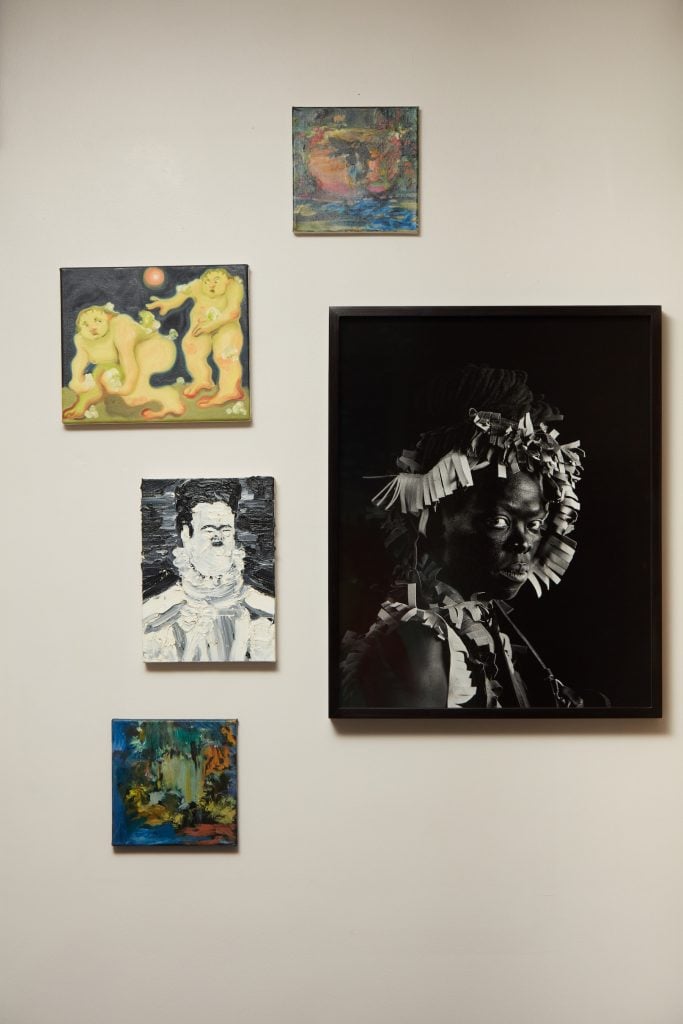
Works by Sarah Cunningham, Georg Wilson, Amir Khojasteh and Zanele Muholi. Photo by Yulia Lebedeva courtesy Selim Bouafsoun.
What was your most recent purchase?
During Frieze week this year, I made a few purchases, including an oil-on-velvet painting, Nero oh, by Issy Wood from Carlos/Ishikawa. I have been trying to buy one for a long time and I am truly excited to have this piece in my orbit. I think Issy is one of the most talented and innovative painters of our time.
I also recently bought a newspaper work by Rirkrit Tiravanija. Also a model of the 20th Serpentine Pavilion by Sumayya Vally, and a piece of her social sculpture, Sunday Rice Ritual, where one becomes part of a gathering with the owners of 19 complementary pieces to make a table, and a large canvas work called Camouflage by Anthony Akinbola from his solo show in Dubai, in electric blue, my favorite color.
Which works or artists are you hoping to add to your collection this year?
I am deeply invested in the artworks I collect and always consider new works by artists already in my collection—so I will of course be watching them keenly. I also have my eye on the works of Caroline Kent, Nikita Gale, Joseph Yaeger, Suki Seokyeong Kang, and Jose Davila, all of whom would add something special to the collection.
What is the most expensive work of art that you own?
I prefer not to attach monetary values to my passion for art.
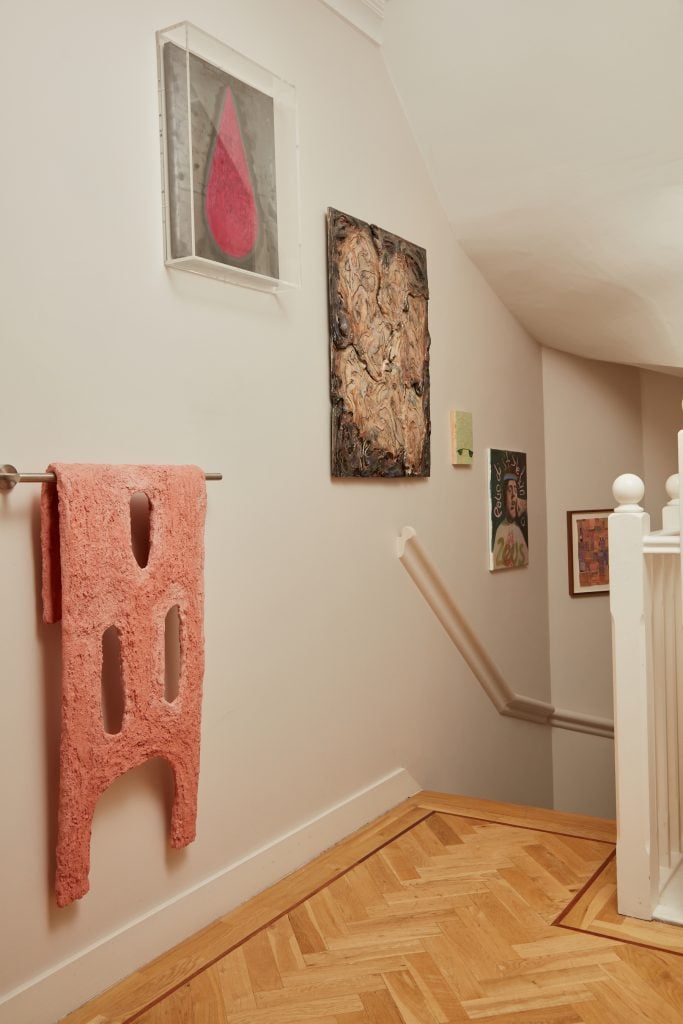
Works by Oren Pinhassi, Michael Sailstorfer, Monika Grabuschnigg, Gabriella Giroletti, Philip Mueller, Antonio Tarsis. Photo by Yulia Lebedeva courtesy Selim Bouafsoun.
Where do you buy art most frequently?
As a young and passionate art appreciator, I visit and stay in touch with the work of younger galleries and I am lucky enough to have a good relationship with many of these gallerists who often become friends. I am also fortunate to work with incredibly knowledgeable and astute art advisors, Ana Sokoloff and Jacqueline Nowikovsky.
I am most interested in galleries that have around five to 20 years of experience, who often do the work of nurturing and growing younger and mid-career artists. I do spend lots of time visiting artist studios across London, and whenever I travel. This year, my focus has opened to include many emerging and recently graduated artists, often with the guidance of [curator] Louis Blanc-Francard.
Is there a work you regret purchasing?
No. Anything I’ve bought I was and am still in love with. I look back on moments in my collection and they epitomize moments of interest in my life, almost like songs transport us to memories. Of course, my interests grow and evolve, but I see every piece as an important part of the story—like pieces of an ever-evolving puzzle of a growing artistic eye.
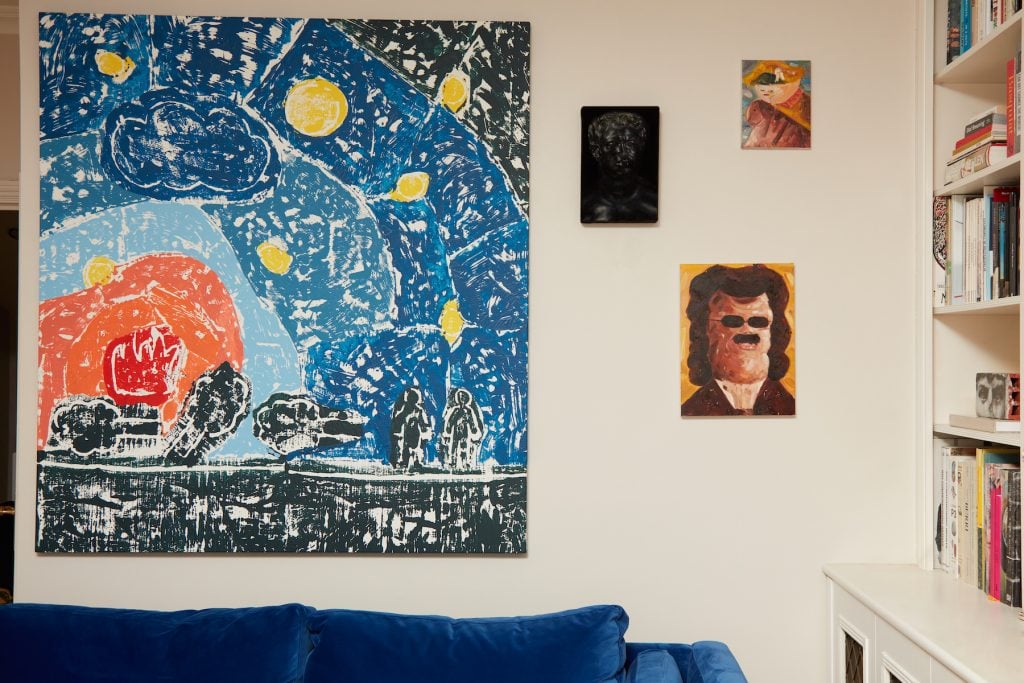
Works by Olaf Breuning, Issy Wood, Amir Khojasteh, Malek Gnaoui. Photo by Yulia Lebedeva courtesy Selim Bouafsoun.
What work do you have hanging above your sofa? What about in your bathroom?
Sofa 1: Olaf Breuning, Amir Khojasteh, and Issy Wood
Sofa 2: Zanele Muholi, George Wilson, and Sarah Cunningham
Sofa 3: Philip Mueller, Ishamel Randal Weeks, Bernhard Bhumann, and Philip Mentzingen
Sofa 4: Yulia Iosilzon and Sola Olulode
Bathroom: A series of drawings of the female form by the late Tunisian artist by Hedi Turki.
What is the most impractical work of art you own?
One of my favorite pieces, a large canvas of nearly 10-by-six-and-a-half feet by Austrian artist Philip Mueller. I have to find ways to delicately move across my stairs whenever I do a rehang.
In London I live in a terraced home with a very different layout from the open-plan apartment I had in Dubai. My collection must evolve with the conditions of my new home. Getting used to this is still a challenge.
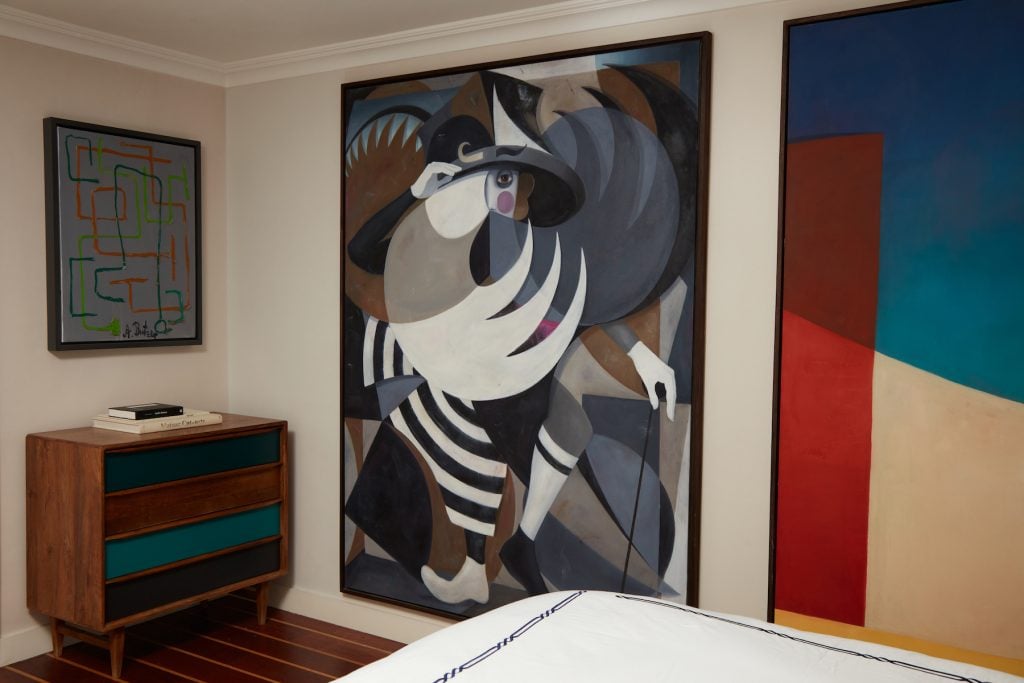
Works by Andre Butzer and Bernhard Buhmann. Photo by Yulia Lebedeva courtesy Selim Bouafsoun.
What work do you wish you had bought when you had the chance?
A “Girl painting” by André Butzer.
If you could steal one work of art without getting caught, what would it be?
The Striding Man and Standing Woman by Giacometti at the courtyards of the Tehran Museum of Contemporary Art. A friend in Iran, Kourosh, and I often jokingly plan a fictional heist of this pair, down to a helicopter escape. If I had to pick a more practical work to steal, I am enamored with Composition VII by Kandinsky at the Tretyakov Gallery in Moscow.